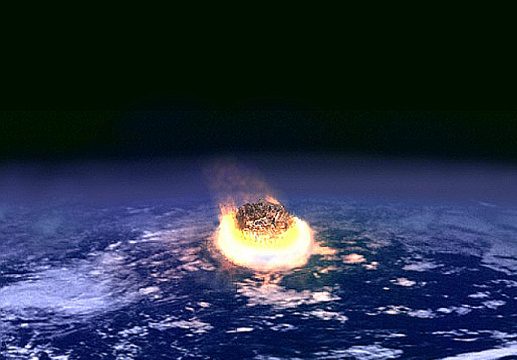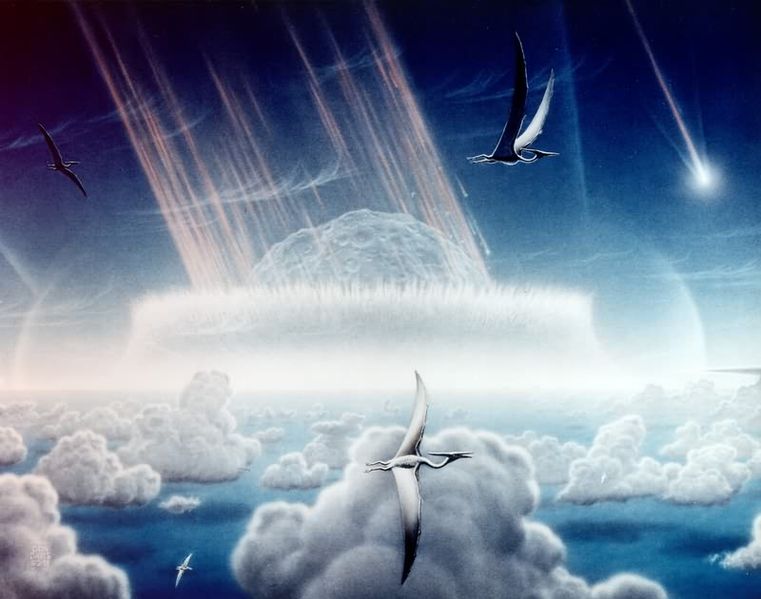
This is an absolutely fascinating but utterly horrifying article, and, although it’s a bit on the long side, I recommend it enthusiastically. Moreover, since it appears in the New Yorker, it’s well-written and accessible:
Here’s its first paragraph:
If, on a certain evening about sixty-six million years ago, you had stood somewhere in North America and looked up at the sky, you would have soon made out what appeared to be a star. If you watched for an hour or two, the star would have seemed to grow in brightness, although it barely moved. That’s because it was not a star but an asteroid, and it was headed directly for Earth at about forty-five thousand miles an hour. Sixty hours later, the asteroid hit. The air in front was compressed and violently heated, and it blasted a hole through the atmosphere, generating a supersonic shock wave. The asteroid struck a shallow sea where the Yucatán peninsula is today. In that moment, the Cretaceous period ended and the Paleogene period began.
Here, too, is a much shorter and much more prosaic article on the same topic:

But I strongly, strongly recommend the New Yorker piece. Permit me to quote two paragraphs (and a tiny portion of a third) from its conclusion:
One day sixty-six million years ago, life on Earth almost came to a shattering end. The world that emerged after the impact was a much simpler place. When sunlight finally broke through the haze, it illuminated a hellish landscape. The oceans were empty. The land was covered with drifting ash. The forests were charred stumps. The cold gave way to extreme heat as a greenhouse effect kicked in. Life mostly consisted of mats of algae and growths of fungus: for years after the impact, the Earth was covered with little other than ferns. Furtive, ratlike mammals lived in the gloomy understory.
But eventually life emerged and blossomed again, in new forms. The KT event continues to attract the interest of scientists in no small part because the ashen print it left on the planet is an existential reminder. “We wouldn’t be here talking on the phone if that meteorite hadn’t fallen,” Smit told me, with a laugh. DePalma agreed. For the first hundred million years of their existence, before the asteroid struck, mammals scurried about the feet of the dinosaurs, amounting to little. “But when the dinosaurs were gone it freed them,” DePalma said. In the next epoch, mammals underwent an explosion of adaptive radiation, evolving into a dazzling variety of forms, from tiny bats to gigantic titanotheres, from horses to whales, from fearsome creodonts to large-brained primates with hands that could grasp and minds that could see through time.
“We can trace our origins back to that event,” DePalma said.
I can’t help but think of the command given in Genesis, to “multiply and replenish the earth.”
We don’t know when the next exterminating meteor will strike. So donate to the Interpreter Foundation and/or to the Witnesses film project soon, while there’s still time.











